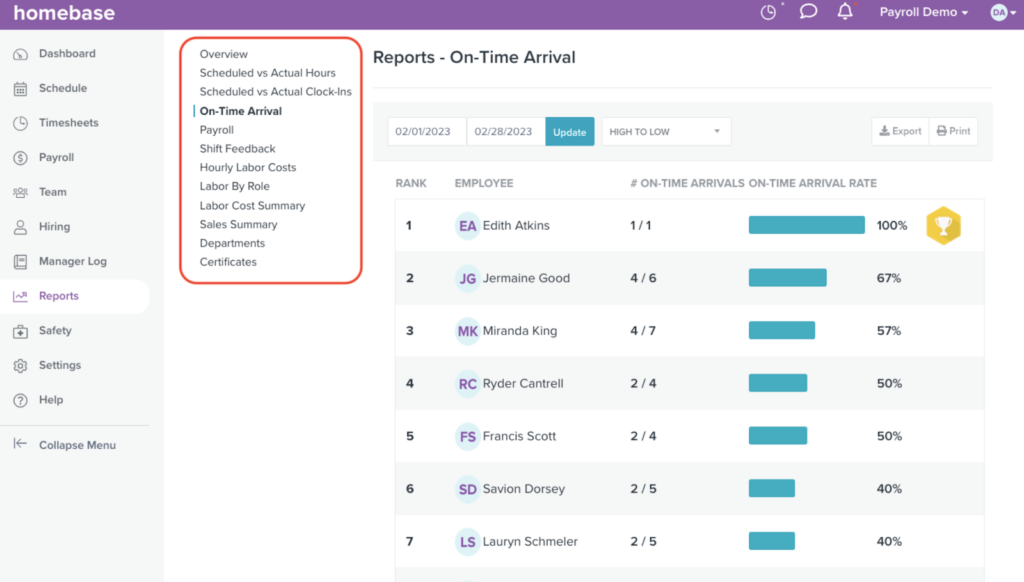Are you struggling to keep your talented employees engaged and motivated? Do your seasoned staff members seem to be itching for new challenges and growth opportunities?
This is a common issue for small business owners, especially millennials, who often seek career growth and varied experiences. Traditional incentives often aren’t enough.
The answer lies beyond the usual perks and team-building activities: job rotation. It’s a simple strategy: move employees through different roles to keep things fresh and challenging. But is it effective? And how do you get started?
In this article, we’ll examine how job rotation benefits your team and your business and the best practices to implement it to retain your best employees and create a more flexible, skilled workforce.
What is Job Rotation?
Job rotation is a management strategy where employees are periodically moved between various jobs or assignments within an organization. This approach is typically lateral, involving temporary shifts rather than promotions.
The primary aim is to expose employees to different experiences and sectors of the company, enhancing their skills and broadening their understanding of the business. Job rotation helps break up monotonous work, increasing employee motivation and satisfaction.
For example, in a restaurant setting, job rotation might involve an employee working as a server, then rotating to a host/hostess position, and later spending time in the kitchen. This rotation allows the employee to understand different aspects of restaurant operations, from customer service at the front to food preparation in the back.
This creates a versatile team that can step into various roles as needed, improving overall service efficiency and adaptability for the restaurant.
Benefits of Job Rotation for Small Businesses
Job rotation leads to improvements in both employee engagement and operational efficiency. Here are some key benefits:
- Enhanced skill development: Employees develop a versatile skill set, understanding various aspects of the business. This means they can handle a wider range of tasks, boosting operational flexibility.
- Increased employee engagement: Rotation keeps the job fresh and challenging. Employees are less likely to feel stagnant in their roles, which can boost morale and productivity. It’s a proactive way to keep the team invested in their work.
- Improved problem-solving: Employees with experience in multiple roles bring diverse perspectives to problem-solving. They’re more likely to develop innovative solutions because they understand the business from various angles.
- Flexibility in staffing: In a small business, every team member counts. With job rotation, you have a team that can adapt quickly, filling in where needed without missing a beat. This is crucial for maintaining service levels during staff shortages or peak times.
Challenges in Implementing Job Rotation in Small Businesses
Acknowledging and strategizing around these challenges is essential for the successful integration of a job rotation program:
- Resource constraints: Small businesses typically operate with leaner teams, making it challenging to rotate staff without affecting day-to-day operations. Efficient planning and scheduling are key to managing this constraint.
- Training requirements: Each rotation may require specific training. The time and resources invested in training for multiple roles can be significant, especially for a small business with a tight budget.
- Resistance to change: Some employees may prefer the comfort of their established roles. Overcoming this mindset requires clear communication about the program’s benefits and supportive measures during transitions.
- Potential skill gaps: Temporary skill gaps can occur as employees move to new roles where they are less experienced. This can temporarily affect the quality of work or service.
- Performance measurement: In a job rotation system, assessing performance can be complex due to varying responsibilities. Developing fair and consistent evaluation methods is crucial to maintain morale and productivity.
6 Best practices in job rotation for employee development
Getting job rotation right in a small business isn’t just about shuffling roles; it’s a strategic move for long-term success. Here are some best practices to help you create a more skilled, motivated, and cohesive workforce.
1. Have a clear goal and time frame
Start by defining what you want to achieve with the rotation: skill development, employee engagement, or cross-training. Then, establish a realistic timeline for each rotation phase, considering factors like learning curves and operational needs.
In a café, for example, you might rotate an employee from being a barista to a server and then to inventory management. Then, consider each role’s complexity: a barista might need two weeks to learn basic serving skills but could require a month to grasp inventory management effectively.
Align these time frames with your café’s busiest periods to avoid operational disruptions. This structured approach ensures each rotation phase is goal-oriented and time-efficient.
2. Choose the right scheduling tool
Once you know what you want to achieve with job rotation, the next step is selecting the right scheduling tool to manage the rotations effectively. Different rotations can impact staff in various ways.
For example, in a café, rotating a barista to a kitchen role might require more preparation and communication than switching between front-of-house roles.
Homebase’s employee scheduling tool integrates with your point-of-sale system, uses past data to predict busy times, and allows you to schedule staff accordingly. Annotations or notes can be added for context, like specific event days or employee shift preferences. This keeps all essential information in one place, ensuring clarity for everyone involved.
Homebase also offers auto-scheduling and time-tracking tools, making it easy to manage clock-in rules and shifts without relying on paper schedules. By digitizing and automating the process, Homebase helps avoid mistakes and saves time, allowing you to focus more on running your café efficiently.

3. Create a rotating work schedule
Creating a rotating work schedule, akin to managing a rotating shift, requires balancing employee availability and preferences with the needs of your business.
Here’s how you can approach it:
- Determine the busiest times for your business and plan rotations accordingly. For example, in a retail store, avoid scheduling inexperienced staff during peak shopping hours.
- Match employees to roles that align with their skills and developmental goals. This ensures a more meaningful and productive rotation experience.
- Ensure that no employee is overwhelmed with responsibilities during their rotation.
- Allow for transition periods where outgoing and incoming employees in a role can overlap. This ensures knowledge transfer and smoother operations.
Homebase’s scheduling tool makes it really easy to manage availability. Your staff can submit their availability via the mobile app (and you can approve it there too). You get automated alerts if you try to schedule a team member when they’re unavailable, so there’s no risk of clashes.
4. Prepare and train employees before rotation
Preparing and training employees before entering a new role ensures they have the necessary skills and knowledge.
Here’s what to consider:
- Assess training needs: For example, a staff member in a retail store may need different training for a cashier role compared to a stock management role.
- Develop targeted training programs: This could include hands-on training, workshops, or e-learning courses.
- Provide resources and support: Consider assigning mentors who can offer guidance and answer questions during the transition.
- Monitor progress and adjust training: Keep track of employees’ adaptation to new roles and be ready to offer additional training if needed.
5. Fine-tune your communication and feedback processes
Encourage your team to openly discuss what is and isn’t working. This fosters a sense of autonomy and facilitates effective knowledge transfer between different shifts, enhancing overall productivity and smooth transitions.
A platform like Homebase makes transparent team communication between workers and managers easy, and emphasizes a culture of transparent and professional messaging.
You can share information about shifts, send documents, and alert them to schedule changes instantly. Your employees can switch shifts between themselves, and managers can choose whether to require approval or not without the Homebase dashboard.

6. Consider your rotation frequency
Determining the right frequency for job rotation is crucial for balancing operational efficiency with employee learning. Consider your business’s historical data on rush hours, peak seasons, and slower periods.
For example, in a retail store, it’s a good idea to schedule more frequent rotations during off-peak seasons to minimize disruption during busy times. Conversely, during peak seasons, rotations might be less frequent but more strategically planned to ensure experienced staff are available during high-demand periods.
With Homebase you can generate detailed charts to help you track trends and changes in attendance, labor costs, sales, and previous payroll runs. This data helps you identify the best times for job rotation, aligning it with your business’s operational rhythms and peak activity periods.

Implement job rotation with Homebase
Job rotation is more than a policy – it’s a growth engine for small businesses. Implementing it effectively means building a versatile, skilled team ready to tackle new challenges.
Homebase offers a whole suite of tools that make it easy to manage and gain visibility into your team’s availability and performance. Homebase can make the entire process easier compared to scheduling manually using pen or paper or juggling spreadsheets. Plus, you automatically factor in staff availability, PTO, and staff roles.
Beyond our powerful time clock and timesheet tools (which can be managed on a smartphone so employees can clock in or out of work anywhere), we also offer HR and compliance features and hiring and onboarding capabilities so you can communicate your policies easily to every new team member.
